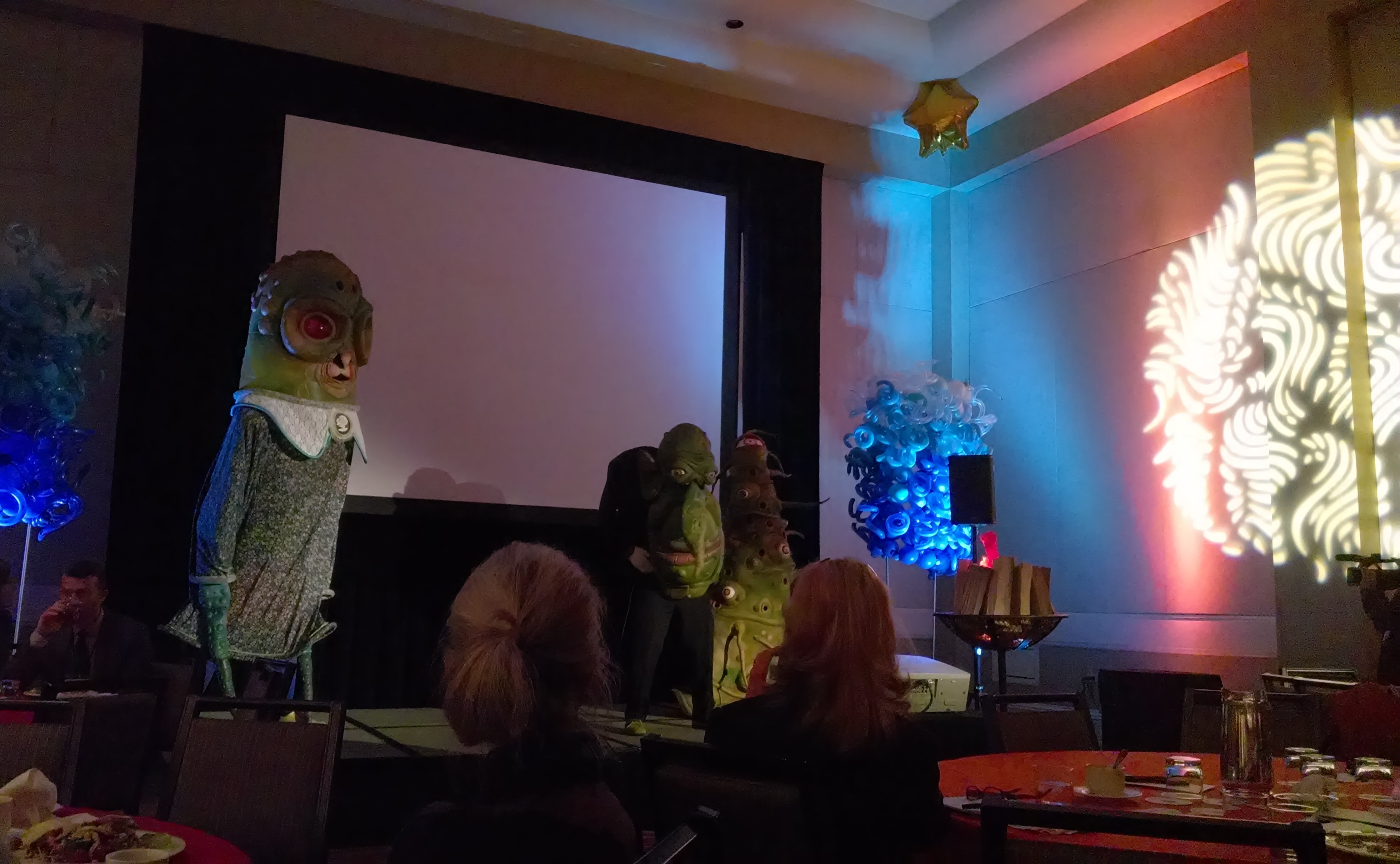On Thursday and Friday, Providence WaterFire hosted the Art of Placemaking conference in the Downtown Omni hotel. This conference brought together economic development professionals, artists, and representatives from the National Endowment for the Arts, the Urban Institute, and other interested parties from all over the nation. The event also included RI DataFest, an examination of how data can improve programs in Rhode Island and elsewhere. I was lucky enough to attend as a volunteer.
Placemaking is a fascinating word. This conference was mainly about how public art can create a sense of place and civic pride. Anyone who has attended a WaterFire knows how the art of WaterFire turns the river area into a new place, different from how it looks and feels on a normal night. If you have never seen WaterFire, it is quite the spectacle. Dozens of braziers are spaced through the Providence River, and fires burn in each one late into the night. The gateway arch, an iconic piece of public art, defines St. Louis.
Leaders nationwide have been turning to public art to induce economic development and civic pride, something WaterFire has built for Providence. However, this desire to use art as a means to an end creates some clashes. Many artists who believe in “art for arts sake” do not like this instrumentalism imposed upon them: art as a means to an end (economic development) rather than a straightforward appreciation for art. Many artists, though, take great joy in creating public art instead of art to stay in a museum or go in a private home.
There have been great successes in finding the proper compromise for the tension between instrumentalism and art appreciation. Some communities have passed Percent For Art ordinances, which require major building projects to put a percentage of construction funds for public art around the building. This has been a particular success in Charlotte, NC where every stop along the light rail line has a neat art installation. Rhode Island, too, has a percent for art program, administered by the RI State Council on the Arts.
The other focus of the conference, data, showed how the grantmaking process dominates the field. Much art is funded through grants, either made by foundations or governments. Grant-making organizations demand reports of programs’ measurable results. How does one measure the effects of WaterFire, or a public sculpture like the gateway arch? How does one measure “increased civic pride” or “improved community cohesiveness?” WaterFire has taken surveys and mapped the reach of WaterFire – how far people travel to see the spectacle. However, WaterFire is an anomaly in how much the community and government has bonded around the art installation. Most arts organizations are scraping by and lack the staff power and know-how to create impact reports. Still, though, the National Endowment for the Arts, ArtPlace, and other foundations want to see results.
Conferences such as this bring innovators together right here in Providence. It shows how Providence is a city on the make. Artists see the world differently, and that makes life, and our built environment, more interesting.
